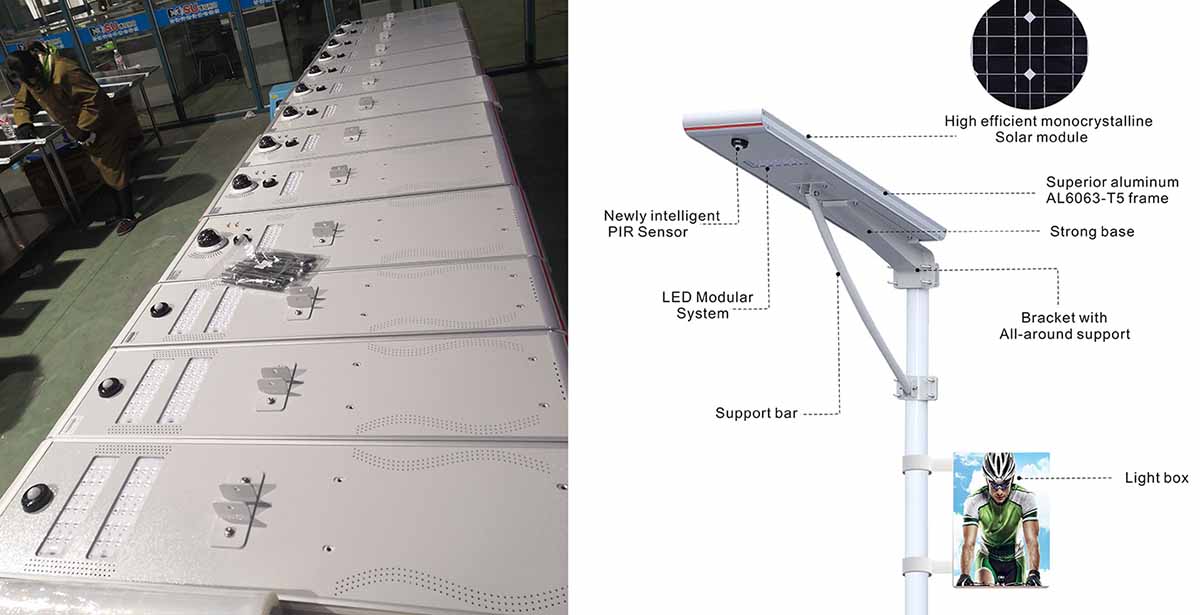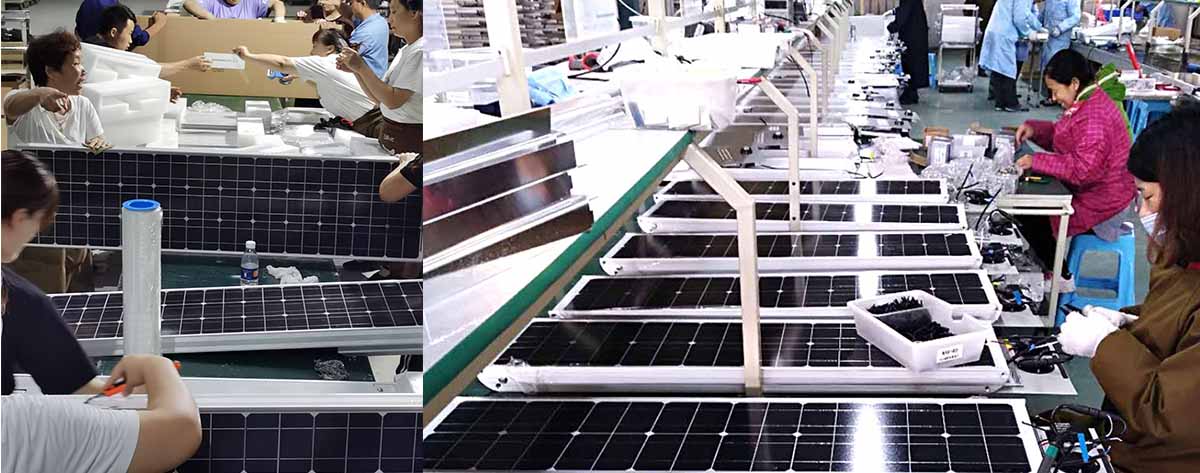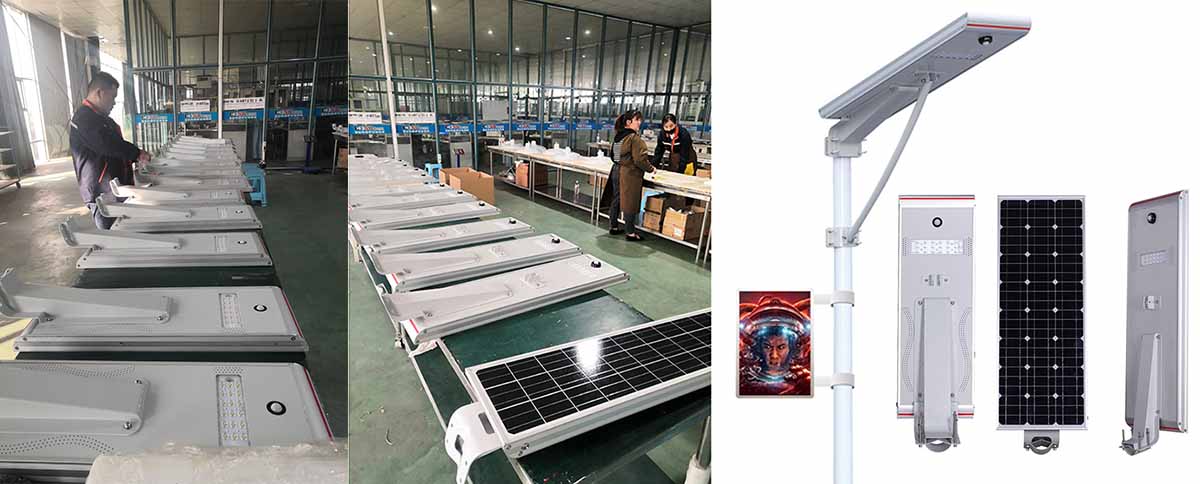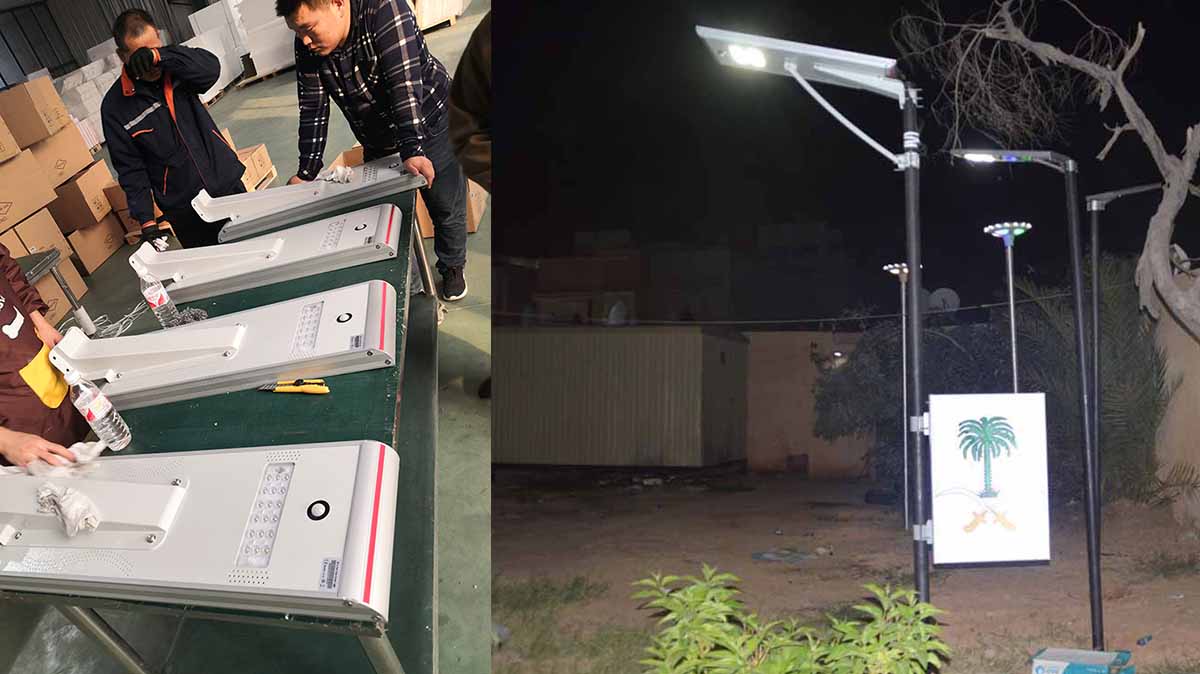Solar advertising lights are multifunctional devices that combine solar power, outdoor lighting, and advertising display. Their core advantages are the lack of a mains power connection, flexible installation, and low operating costs.
*They meet nighttime lighting needs while also delivering advertising messages through the lightbox, making them widely suitable for commercial, public, and remote areas.

【1】. Core Components and Operating Principle
The device operates based on an "energy collection-storage-utilization" cycle and consists of four key components:
Solar panels: These absorb sunlight during the day and convert it into electricity, serving as the core energy source. They are primarily made of monocrystalline silicon, with a conversion efficiency of 18%-23%, adaptable to varying sunlight conditions.

Energy storage batteries: These store the electricity generated by the panels for use at night or on cloudy days. Common options include lithium batteries (with a lifespan of 3-5 years and lightweight) and lead-acid batteries (low cost and a lifespan of 1-2 years), with the choice depending on the application.
Control module: These manage charging and discharging (to prevent overcharging and over-discharging), control the lighting on/off/brightness, and adjust the advertising lightbox backlight. Some systems support remote control (e.g., parameter adjustment via an app). Lighting and Light Box: LED light sources provide illumination, while the light box can accommodate static posters or dynamic displays. The housing is waterproof, sun-proof, and wind-resistant, making it suitable for outdoor environments.

【2】. Core Advantages: Why Choose Solar Advertising Lighting?
Zero Electricity + Low Installation Cost: No wiring required for mains power, eliminating electrical installation costs and long-term electricity bills. This makes it particularly suitable for remote areas without grid coverage (such as rural areas and scenic areas).
Dual Practical Value: A single investment provides both "lighting" and "advertising." For example, street lighting can illuminate the road while displaying brand advertisements, while public area lighting can also provide both lighting and public welfare promotion.
Strong Outdoor Durability: Most products have an overall protection rating of IP65 or higher, resistant to rain, dust, and high temperatures. Some products support extreme temperatures of -30°C to 60°C, with a service life of 5-8 years.
Environmentally Friendly and Policy-Compliant: Relying on clean energy, they comply with the "Dual Carbon" policy. Some regions offer installation subsidies for outdoor solar equipment, reducing initial investment costs.
【3】. Core Parameter Selection: From "Outdoor Use" to "Easy to Use and Durable"
1. Power System: Determines Battery Life and Stability (Most Critical)
The core of solar energy equipment lies in the balance of "power generation - energy storage - power supply." Mismatched parameters can directly lead to insufficient battery life or component damage.
Solar Panels:
Preferably choose monocrystalline silicon (conversion efficiency of 18%-23%, strong weather resistance, and slow degradation over long-term use). Avoid polycrystalline silicon (1-3% lower efficiency) or amorphous silicon (susceptible to aging).
Power consumption should be calculated based on the load (lighting + advertising) and the duration of sunlight. For example, for 30W lighting + 20W advertising (total load 50W), choose a 100W-120W panel in high-sunlight areas and a 150W-180W panel (with some redundancy) in low-sunlight areas.
Energy Storage Battery:
Select lithium batteries (lifespan of 3-5 years, lightweight, and superior to lead-acid batteries in low temperatures). For budget-constrained users, consider lead-acid batteries (lifespan of 1-2 years, requiring regular maintenance).
Capacity is calculated as "load power × operating time × 1.5x redundancy." For example, if the light is on for 6 hours per day (50W × 6h = 300Wh), a 12V/50Ah (600Wh) or higher battery is recommended to ensure battery life of 1-2 days even on cloudy days.
Controller:
Must have MPPT (maximum power point tracking) functionality, which provides 15%-30% more power than traditional PWM controllers and is particularly suitable for areas with unstable sunlight.
The controller must be compatible with the battery type (lithium battery / lead-acid battery) and have overcharge, over-discharge, and short-circuit protection to prevent battery damage.

【4】. Lighting and Advertising Functions: Matching the Use Objectives
Lighting Module:
Brightness: Select the lumen value based on the scenario. Commercial streets require 1500-3000 lumens (high brightness), while community areas require 500-1500 lumens (soft brightness).
Control Method: For basic control, choose "light control + timer control" (automatic on/off with fixed time periods). For advanced control, choose "brightness grading + motion sensing" (energy-saving and flexible).
Advertising Module:
Static Advertising: Choose PC endurance board light boxes (UV-resistant and non-yellowing), with easy image change.
Dynamic Advertising: Scrolling light boxes require silent motors (to avoid noise disturbance). For LED screens, choose outdoor high-brightness screens (brightness ≥ 5000 cd/m2, visible during daylight hours). Also, confirm whether remote content updates are supported.
leave a message
Scan to Wechat :

Scan to WhatsApp :
